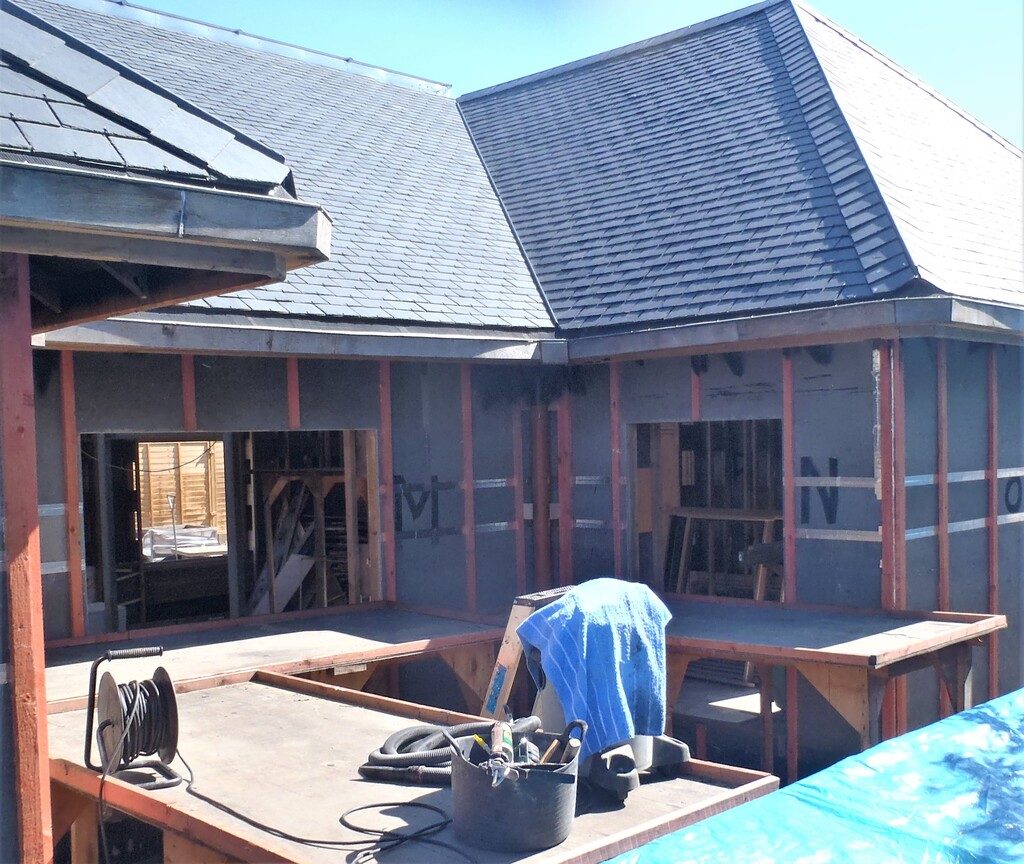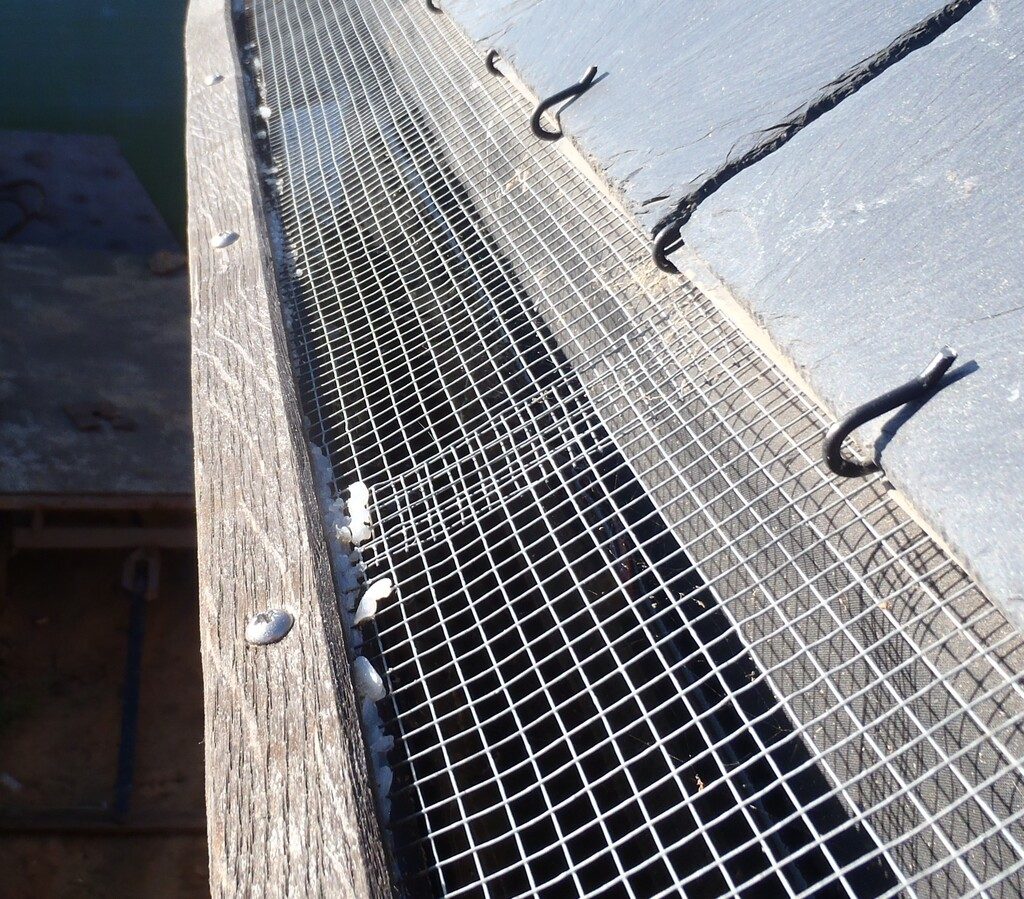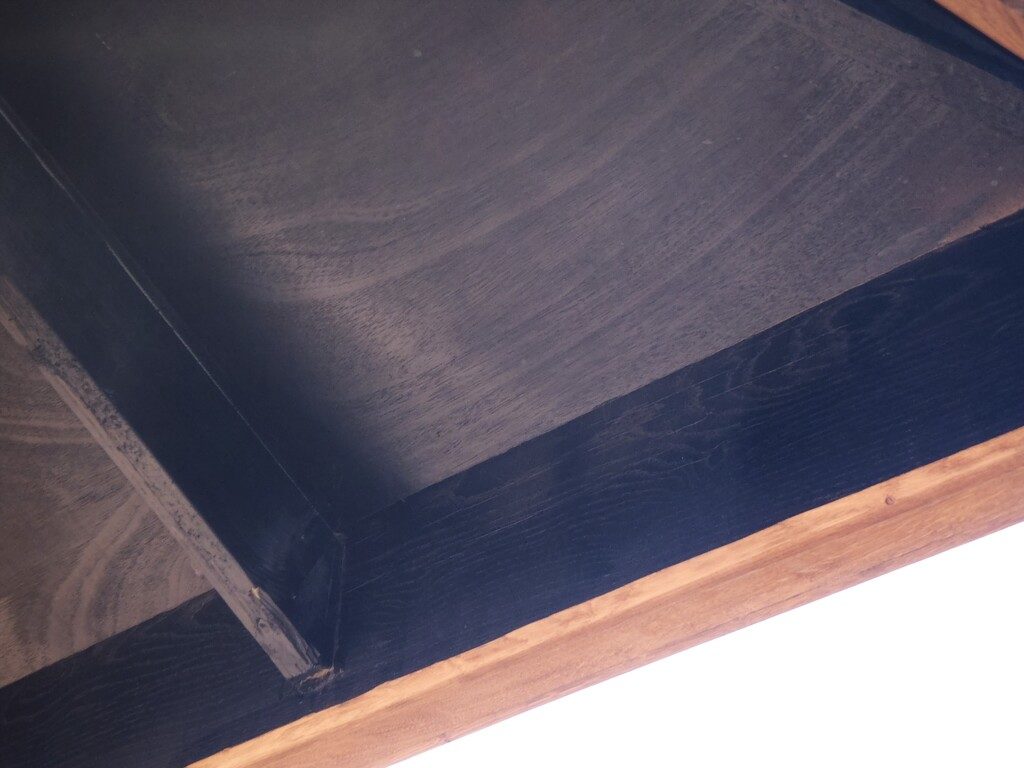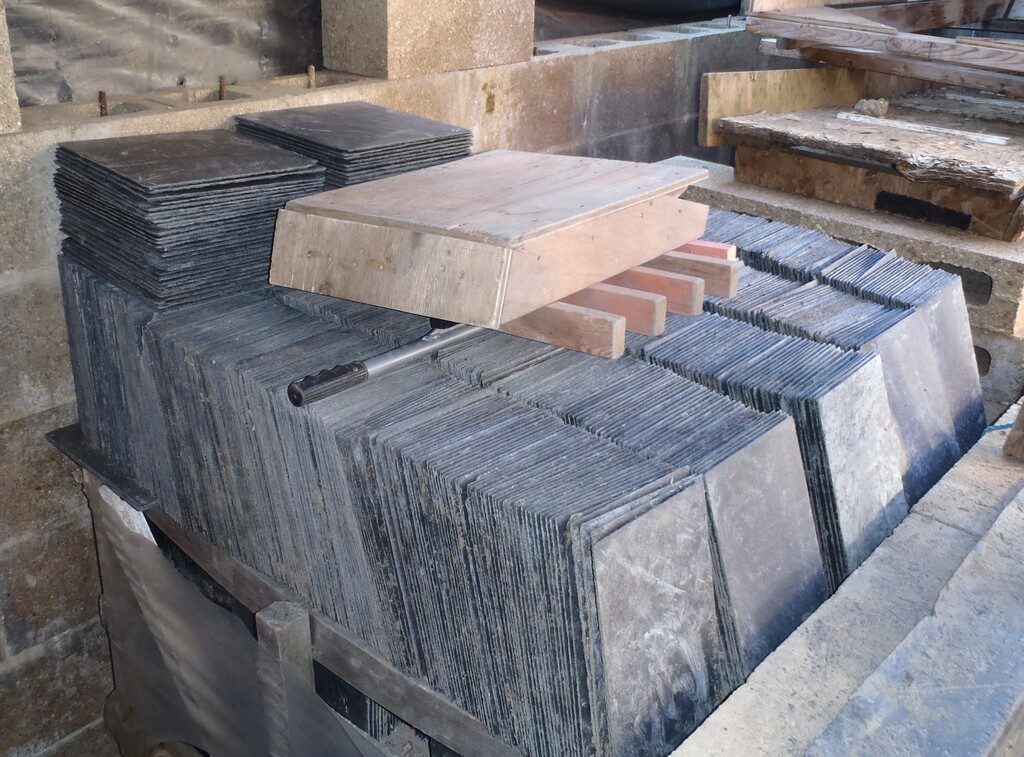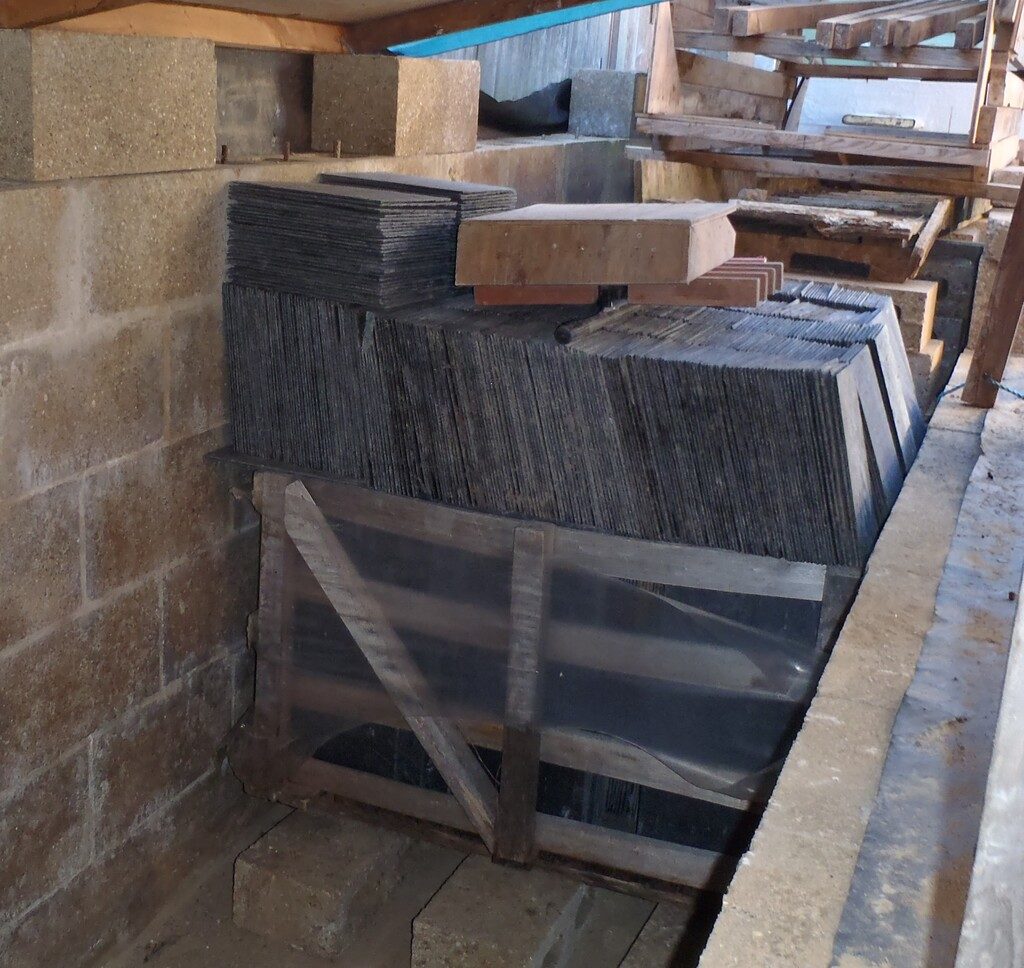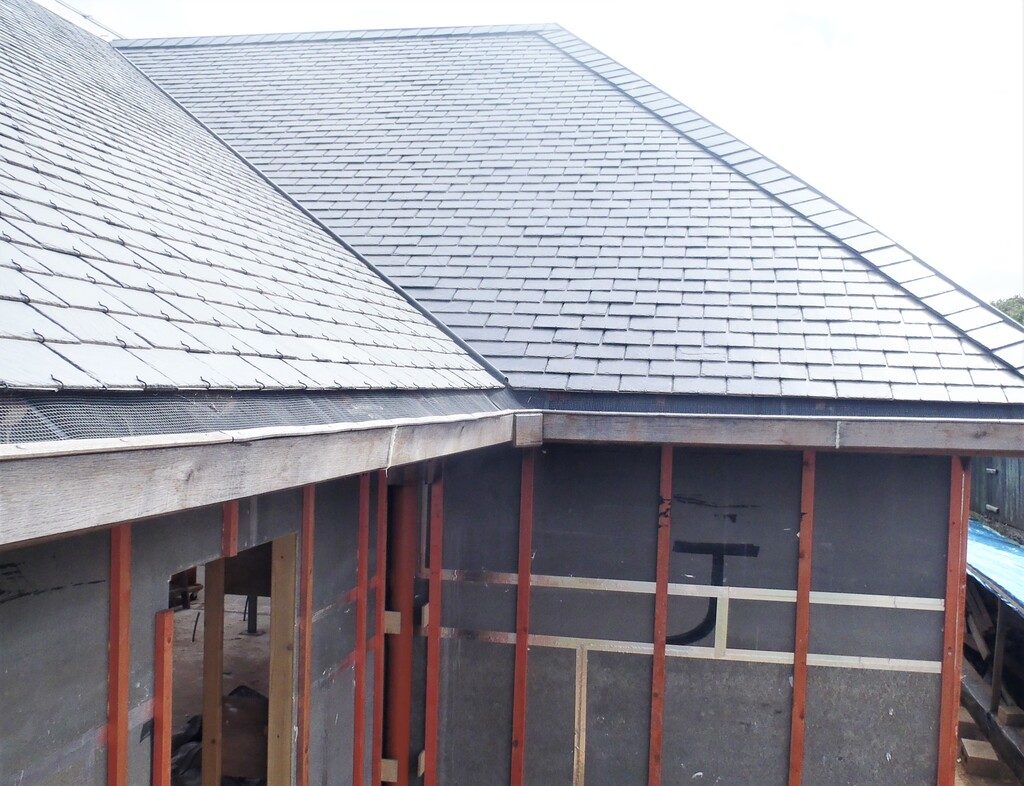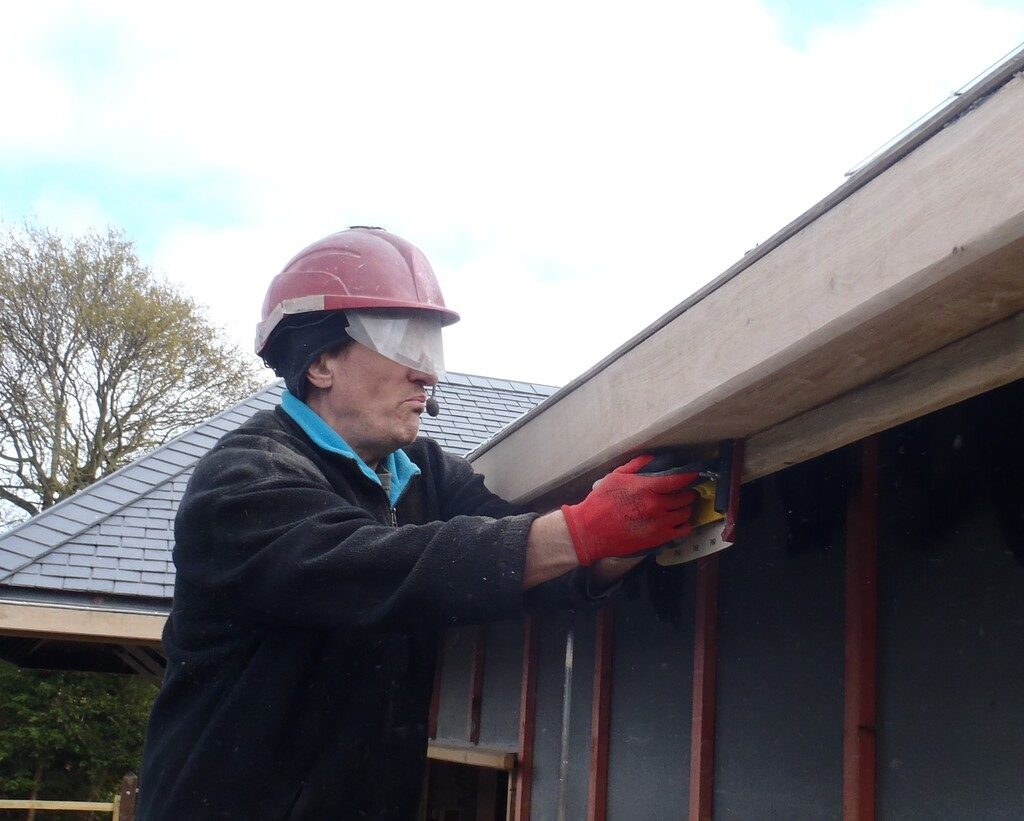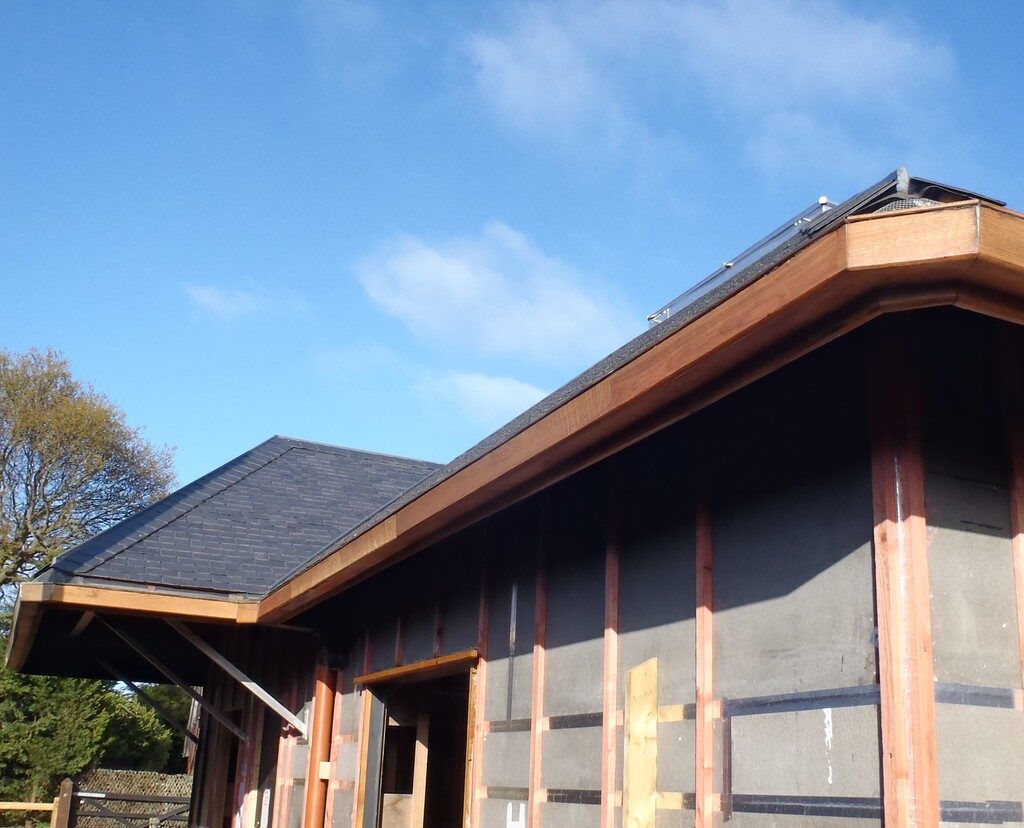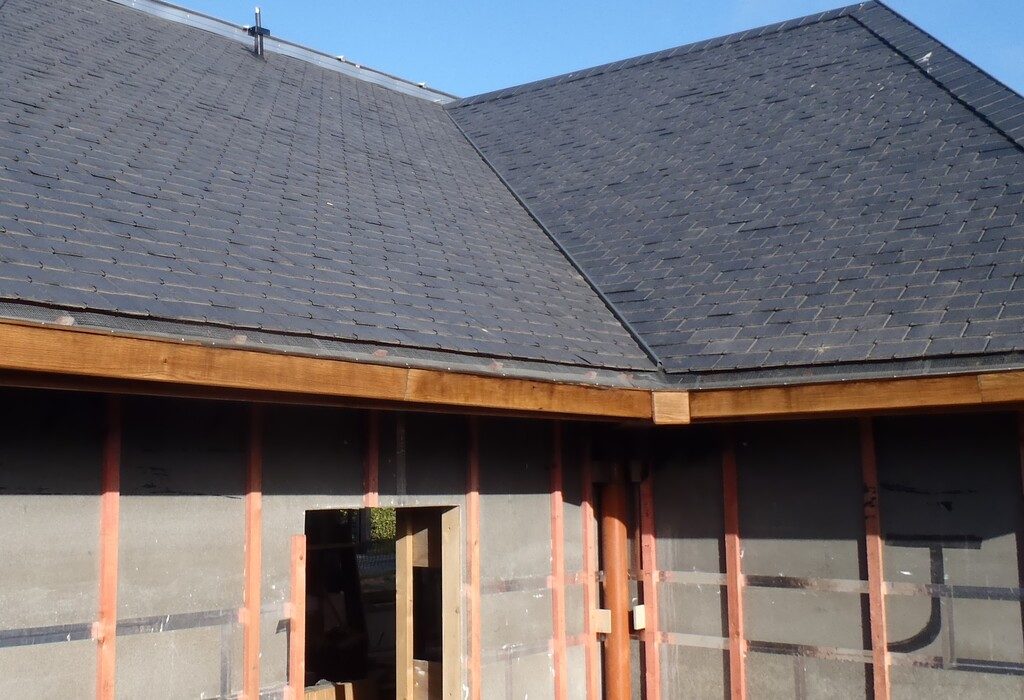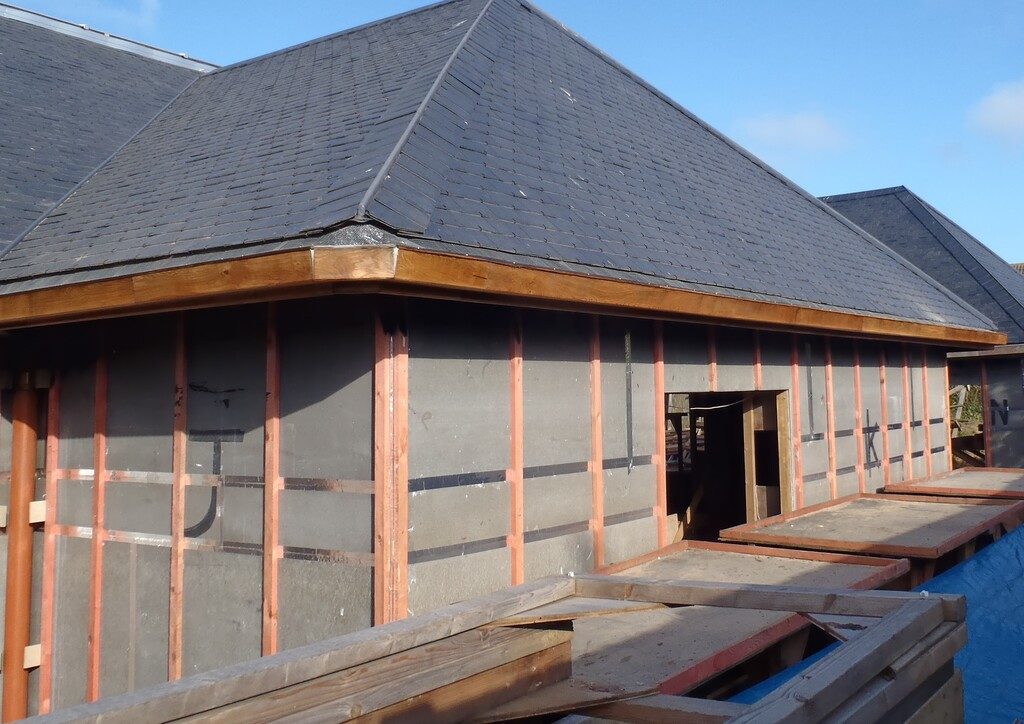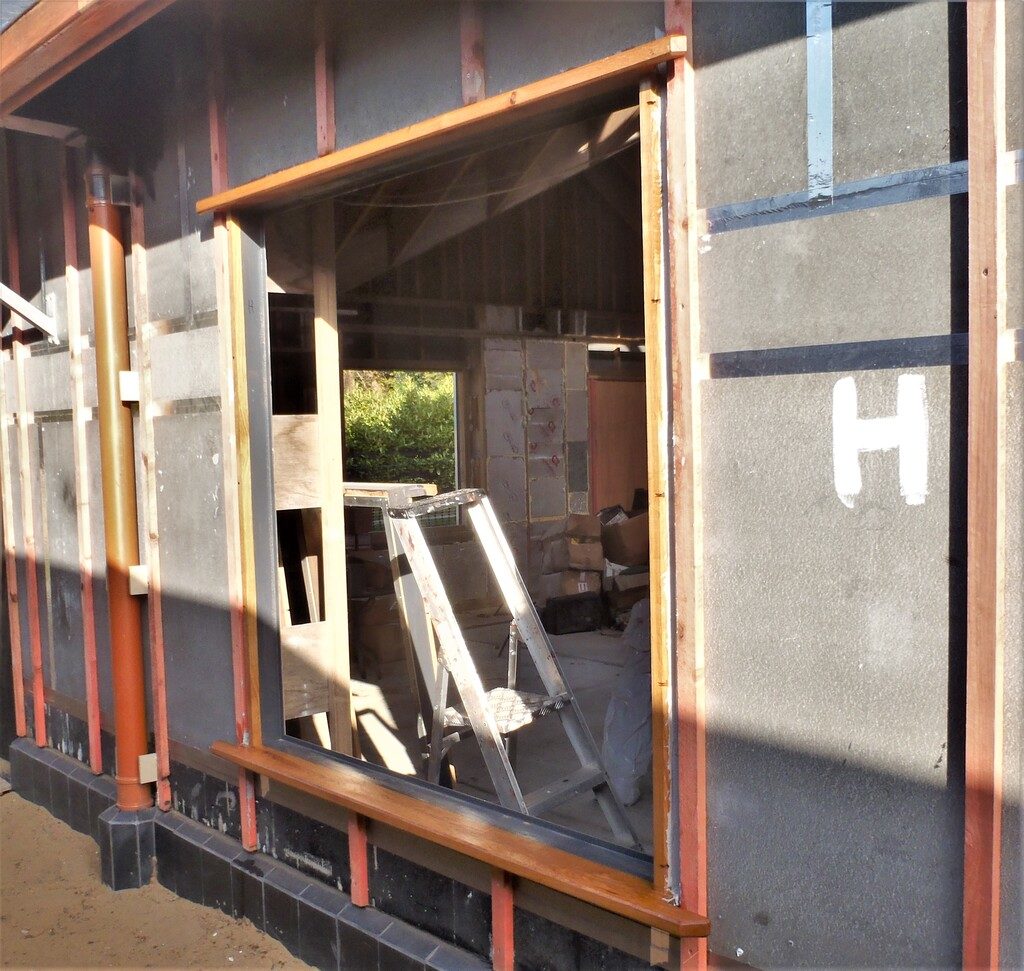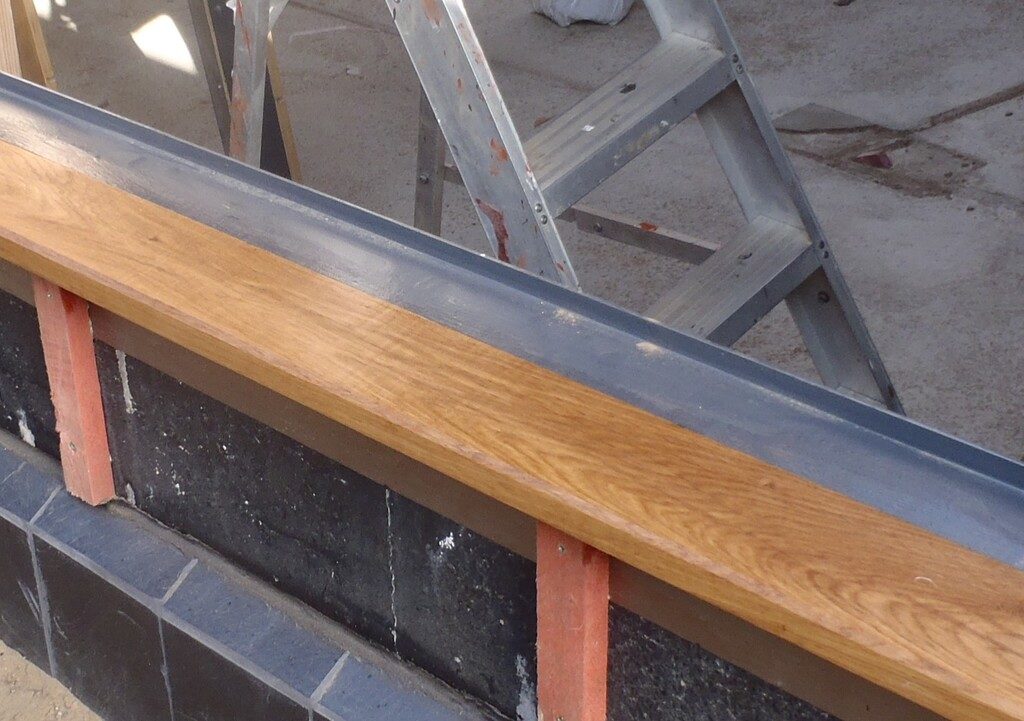We started our week on a Tuesday after having a day off for Easter. We finished off applying the black yukky mastic stuff to the top edge of the Slate Skirt and it is now done right around the whole house. We also have been moving the excess Slates from the long time storage location beside the Loke to our swimming lane, to get them out of the way and tidied up under cover. The crate of slate was slowly sinking into the ground soil and an army of nature’s creatures have been living in between the layers of slates!
Then we decided to get on with the inspection of the guttering and finish off checking the sealing of the rubber membrane at their ends. We also sealed the metal mesh edge to the front vertical part of the gutters. They are clamped down using a thin oak strip so we applied some clear silicone sealant inside the joint and screwed it all tight again.
This will stop the rain water from leaking through this joint and dripping down on to the ground. The water has a habit to cling to the metal mesh and rolling down towards the clamped joint and work its way through. Also, there is a strong possibility that the same water would catch any holes or the edge of the rubber membrane and travel backwards under the rubber and back into the gutters. We found one or two sections having rain water underneath the rubber membrane so we had to lift it up and suck out the water. The worse example of this was the “M” section and we found that the rubber edge was barely on the top of the oak vertical timber piece.
On Wednesday afternoon, we went around the complete circuit of the house and painted behind the fascia board, making sure it was nice and neat down to the bottom of the fascia. Most of it was done when we sprayed several weeks ago but we had a mobile barrier to protect our guttering against accidental splatters.
We finished off the day with the excess slate moving task, finally having got all 2600 of them into our swimming lane for long-term storage.
So on Friday, we started vigorously sanding the oak gutters, first trying our belt sander but found it too heavy to hold upside down and it wasn’t quite getting into the corners plus also the flat bed design couldn’t cope with the uneven timber. So we switched over to our angle grinder with a very course 40 grit sanding disc. This was very much better at removing the grey colouring in the wood caused by exposure to sun and the weather. Our orbital sander then came along to smooth off the surfaces, with occasional hand sanding.
Then we applied the timber oil treatment to the naked oak surfaces using a 4inch wide fluffy woolly roller and left it to soak in and dry.
We also oiled our first window frame too to see how it fares, see how often we will have to oil it and see how it rubs down.
Our last day, Saturday, was a rather wet day with a steady rain falling all day but we did take that opportunity and go and check the guttering to see if we had any water dripping over the gutters. The conclusion was .. much better! It was difficult to tell to which drip was rain just landing on the gutter itself or coming from water running down the mesh but we carefully watched these drips and it seems that our sealant is working! Hurray!
Also the freshly oiled surface of the gutters was resisting the water and making it bead up and run off more efficiently. Another Hurray!
So we worked indoors on the gas flame burning mechanism, a couple of electric motors to drive the rollers that will guide each larch timber plank through the charring machine. We want to establish a uniform speed so the pattern of charring is smoother and more consistent. We will experiment with deliberately changing the motor speeds and see what unusual patterns we might get.
Next week, we carry on cleaning the gutters and oiling them and then we carry on installing the other eleven windows.
